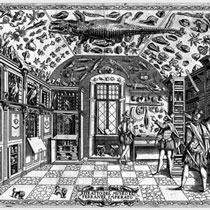
Published 2020-03-25
Keywords
- Museum,
- Monument,
- Symbol
How to Cite
Copyright (c) 2019 FAMagazine. Research and Projects on Architecture and the City

This work is licensed under a Creative Commons Attribution-NonCommercial-ShareAlike 4.0 International License.
Abstract
The Museum seen as a repository of memories to be kept and handed down has happily nourished the intrinsic meaning of its architecture for some time. Thanks to Museums, contemporary architecture has been able to express some quite extraordinary formal, constructive, and expressive potential. The Museum as an autonomous work of architecture emerged at a time when Hegel was declaring the fulfilment of the historical path of the European spirit in his Lectures on the Philosophy of World History written between 1821 and 1824. In his Lectures, Hegel highlighted a simple fact that is crucial to our historical experience. We become aware of things, Hegel said, when they appear at dusk. And at that point, we can only reminisce over what has been.
However, the past – the ‘already been’ – as much as it has been summarized, schematized and reorganized through abstract and conceptual knowledge, continues to populate the spaces of our interiority and collective memory and still surfaces today as a premonitory agent of revelatory anxieties. In other words, the Museum appears to our eyes as a formidable premonitory agent of revelatory anxieties.
References
- AMSELLE J-L. (2017) - Il museo in scena. L’alterità culturale e la rappresentazione negli spazi espositivi Melteni, Milano.
- BENJAMIN W. (2010) - I «passages» di Parigi, Torino, Einaudi.
- CLEMENTE I. (2016) - Spazio rituale, in Lucus, Aion, Firenze 2016.
- COLLI G. (2015) - La sapienza greca, vol.1, Adelphi, Milano.
- CORBIN H. (2010) - L’immagine del Tempio, SE, Milano.
- CORBIN H. (1986) - Corpo spirituale e Terra celeste. Dall’Iran mazdeo all’Iran sciita, Adelphi, Milano.
- DE CICCO P. (2014) - Museo pseudepigrafo, un ponte artificiale tra Orfeo ed Eleusi, in Presses Universitaires de Franche-Comté / «Dialogues d'histoire ancienne», 2014/2 40/2. Distribution électronique Cairn.info pour Presses Universitaires de Franche-Comté.
- DURAND G. (2009) - Le strutture antropologiche dell’immaginario, Dedalo, Bari.
- HEGEL G. W. F. (1961) - Lezioni sulla filosofia della storia, Vol. I, La razionalità della storia, La Nuova Italia Editrice, Firenze.
- HILLMAN J. (1981) - Il pensiero del cuore e l’anima del mondo, Garzanti, Milano.
- HUBERT H., MAUSS M. (2002) - Saggio sul sacrificio, Morcelliana, Brescia, 2002.
- ASPERS K. (2014) - Origine e senso della storia, Mimesis, Milano.
- JUNG C. G. (1981) - Psicologia e alchimia, Bollati Boringhieri, Torino.
- JUNG C. G. (2007) - Gli archetipi dell’inconscio collettivo, Bollati Boringhieri, Torino.
- LOOS A. (1999) - Parole nel vuoto, Adelphi, Milano.
- MIES VAN DER ROHE L. (2010) - Gli scritti e le parole, Einaudi, Torino.
- OTTO F. W. (2005) - Le Muse e l’origine divina della parola e del canto, Fazi Editore, Roma.
- PLATONE Repubblica 364 e – 365 a.
- PLATONE, Repubblica II, 363 c.
- RIEGL A. (2011) - Il culto moderno dei monumenti, Abscondita, Milano.
- ROSSI A. (1969) - Architettura per i musei, in Teorie della progettazione architettonica, Dedalo, Bari.
- SEMERANO G. (2001) - L’infinito un equivoco millenario. Le antiche civiltà del Vicino Oriente e le origini del pensiero greco, Mondadori, Milano.
- SEMERANO G. (2002) Le origini della cultura europea, Vol. II, Dizionari etimologici, Leo S. Olschki, Firenze.
